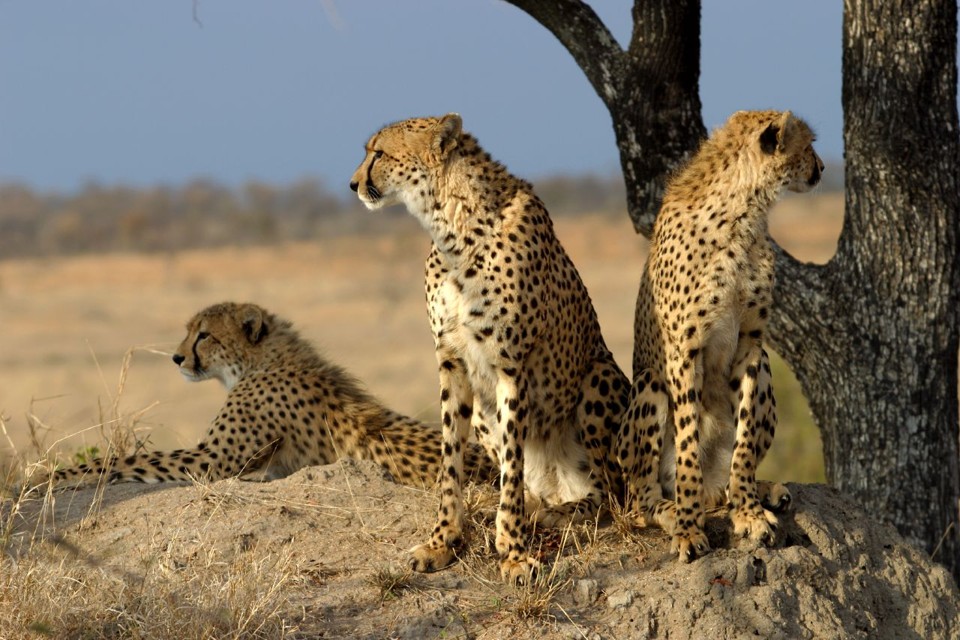The Ed's Up #110
 Why Do Most Languages Have So Few Words for Smells?
Why Do Most Languages Have So Few Words for Smells?
"In English, there are only three dedicated smell words—stinky, fragrant, and musty—and the first two are more about the smeller's subjective experience than about the smelly thing itself. All of our other scent descriptors are really descriptions of sources: We say that things smell like cinnamon, or roses, or teen spirit, or napalm in the morning. Some scientists have suggested that smells are inherently indescribable. But in Southeast Asia, there are at least two groups of hunter-gatherers who have between 12 and 15 dedicated smell words. “Their meaning is not general over tastes, textures, pain, or any other state; their business is smell,” says Majid. “Just as you would describe a tomato as red, a Jahai speaker would describe the smell of bearcat as itpit.”" (Image: Suzanne Plunkett) The Hottest New Cancer Drugs Depend on Gut Microbes
The Hottest New Cancer Drugs Depend on Gut Microbes
"After decades of frustration, scientists have finally found effective ways of turning the immune system against tumors, with spectacular results. Immunotherapy, once a poster child for neglect and failure, has finally come of age. The same could be said for the human microbiome. Today, these two trendy fields are colliding head-on. Working independently, two teams of scientists have shown that gut microbes—at least in mice—can dramatically affect the immune system's ability to deal with cancer. These microbes affect an individual's natural immunity to cancer, and how well they respond to immunotherapy drugs. And certain species of bacteria are especially potent at driving anti-tumor immunity, suggesting new ways of making new cancer drugs that much more potent." (Image: NIH Image Gallery)  The Woman Who Tweets Cheetahs
The Woman Who Tweets Cheetahs
"I’ve seen this sequence time and again in any number of wildlife documentaries: There’s a cheetah. It stalks a gazelle, body slung low, shoulder blades pumping like pistons. It launches forward with astonishing acceleration, head level to the ground, spine flexing dramatically, hips and shoulders swinging out at impossible angles. The cheetah reaches out with a paw, trips the doomed gazelle, and clamps its jaws onto its throat, closing its windpipe and suffocating it. Within a minute, it’s all over. End scene. Except, it’s often not quite over." (Image: James Temple)
 A Venomous Fight Among Reptile Scientists
A Venomous Fight Among Reptile Scientists
"Reptilian venoms are among nature's deadliest innovations. Every year, these chemical weapons, delivered through the fangs of vipers, cobras, kraits, and more, kill up to 200,000 people, not to mention millions of rodents, birds, and other animals. These toxins are also causing painful convulsions in the halls of academia, where two rival camps of scientists are engaged in a bitter (toxic?) debate about their evolutionary origins. Ostensibly, this is a spat over how many times venom evolved among snakes and lizards—just the once, or on several repeated occasions. It's also about whether supposedly non-venomous species like bearded dragons and Komodo dragons actually pack a toxic bite. But really, it's about the see-sawing nature of scientific truth, and the ways in which hypotheses become enshrined as facts." (Image: Luca Boldrini)
 Damselfish in Distress Release Chemicals That Summon More Enemies
Damselfish in Distress Release Chemicals That Summon More Enemies
"In the finale Jurassic World—and spoiler warning for anyone who hasn’t seen it—Bryce Dallas Howard’s character uses a flare to summon a Tyrannosaurus,which then battles the film’s main antagonist Indominus rex. As the two predators duke it out, the humans escape. A similar strategy plays out in the Great Barrier Reef. When threatened by predators, the lemon damselfish sheds a chemical alarm—a substance housed in its skin that says, “I’m being attacked!” This message isn’t intended for other damselfish. It’s not a warning or a call for help. Instead, it attracts even more predators. (Image: Oona Londstedt)"
Red Meat Ruckus, Electrifying Eels, and Sugar Overload
Here's me on Science Friday, talking about some recent stories of mine. If you want to hear the dulcet tones of my voice, here's your chance. More good reads
- Through twin histories of telescopy and Hawaii, Adrienne LaFrance covers the bitter debate over a new mega-telescope. Outstanding piece.
- STAT News has finally launched with an all-star line-up. Here's Sharon Begley with a profile of the amazing Feng Zhang, , Carl Zimmer on the dubious nature of Craig Venter's new project, and Helen Branswell on a tumour that came from a tapeworm, Bob Tedeschi on the cost of breakthrough cancer drugs, and Begley again on how a gene-editing tool was used to treat a girl's cancer in a medical first.
- The British Mycological Society's list of recommended English names for fungi is pure joy.
- You can raise your testosterone levels just by acting aggressive. Annalee Newitz on a fascinating study that changes our perspective on sex, hormones, and stereotypes.
- How to Build a Robot That Will Feed You Breakfast. Hilarious, by Simone Giertz
- India is training ‘quacks’ to do real medicine. Here's why. Really interesting piece on pragmatism versus idealism in medicine, by Priyanka Pulla
- The terrifying die-off of saiga antelopes in May was even worse than anyone thought. By Carl Zimmer.
- This story is about the Hardest Logic Puzzle Ever but also the Best Pick-Up Line Ever. By Brian Gallagher
- "I Spent 4 Months Hand-Cutting A Paper Microbe"—a gorgeous piece of art by Rogan Brown
- "Welcome to the Anthropoopscene." Cari Romm on how the loss of giant animals have affected the Earth's nutrient cycles.
More good links will be released in tomorrow's linkfest on Not Exactly Rocket Science.
You can also follow me on Twitter, find regular writing on my blog. If someone has forwarded this email to you, you can sign up yourself.
And that's it! Thanks for reading.
-Ed